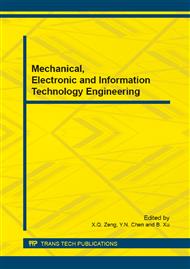p.724
p.728
p.734
p.738
p.742
p.748
p.753
p.758
p.765
Context Awareness on Mobile Devices
Abstract:
Context aware computing is important for applications to provide smarter and safer
service to mobile users, especially when users’ context changing rapidly or regularly. In this paper,
we propose a context aware model for mobile devices based on audio and location. The information
can easily obtained from sensors, e.g., microphones and GPS. Thus, exploiting the MFCC features
and the location, a Bayes Net is trained and built and will be used for context classifying in the
real-time classification. The results of experiments implemented on Android 4.0 platform
demonstrate promising performance, which indicates that the model is able to support real
applications.
Info:
Periodical:
Pages:
742-747
Citation:
Online since:
March 2015
Price:
Сopyright:
© 2015 Trans Tech Publications Ltd. All Rights Reserved
Share:
Citation:


